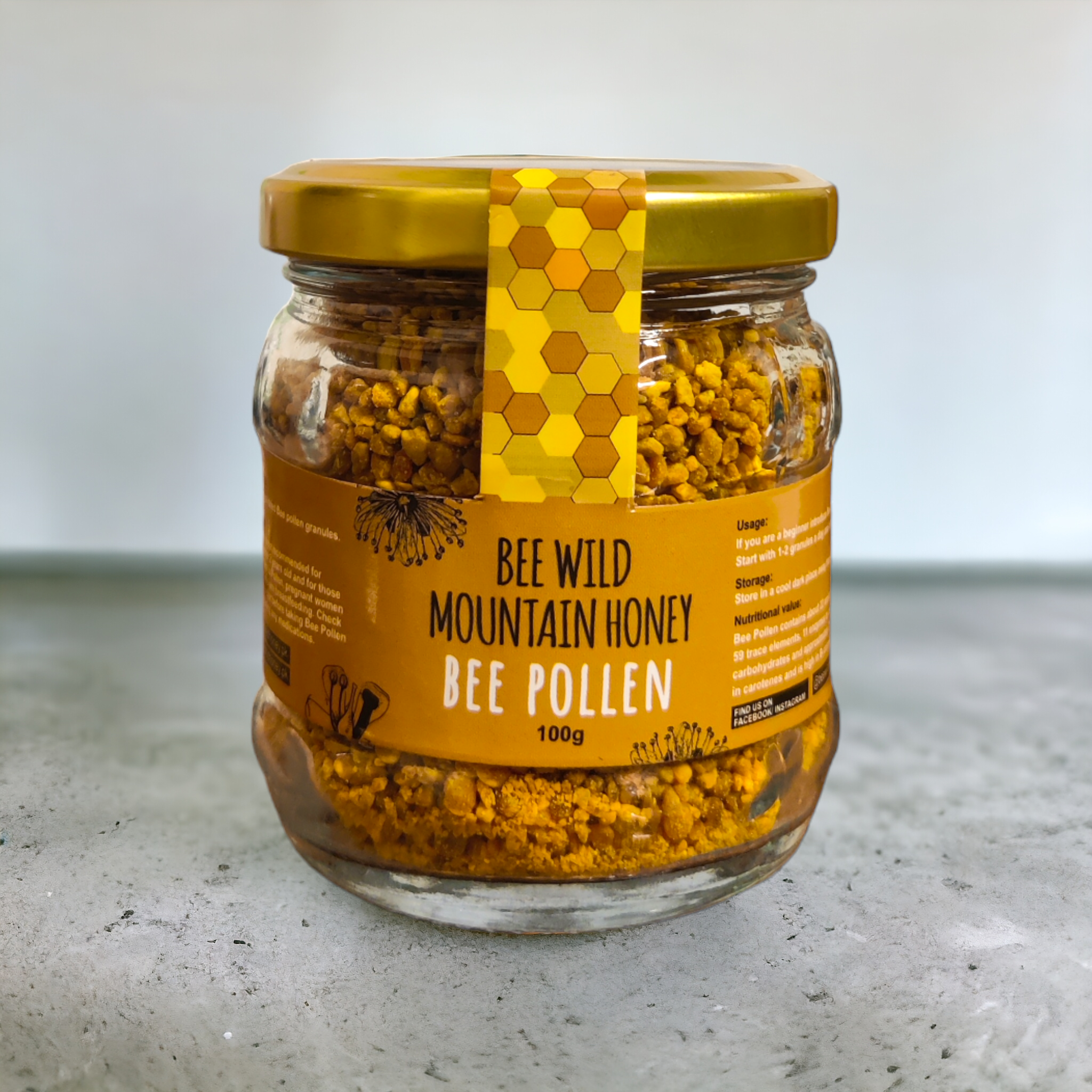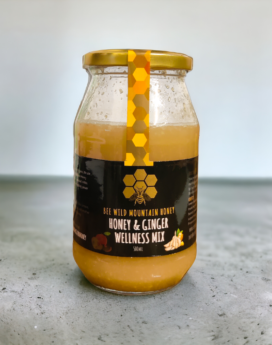Bee Pollen
₨1,000.00
Indeed, Broadhurst is right. It is a bit of an understatement to simply say that pollen is highly nutrit1ous. Pollen is full of an alphabet of vitamins and every trace element known to be essential for mammals (although some are present in very small amounts). Pollen also contains #eleven #enzymes and #coenzymes; #fourteen #fatty acids; and several potent #phytochemicals (plant- derived chemicals), specifically carotenoids and phenolic valued for their @antioxidant properties.
Pollen contains 12 to 40 percent pr0tein by weight (depending on the pollen source), and unlike most plant-based proteins, it has a full spectrum of #amino acids, making its protein balanced and complete.
Chock-full of these nutritious and health-boosting elements, pollen has been found to be helpful in so many ways:
- Athletes (and tired parents) can use pollen to boost energy and stamina.
- The flavonoids in pollen can help lower cholesterol and reduce inflammation
- Strongly antioxidant, pollen can help neutralize the free radicals that damage the cells in our bodies.
- The wide range of nutrients and trace elements found in pollen helps boost overall health and 1mmunity.
- Pollen contains the phytochemical rutin, which strengthens blood vessels. This can help with hypertension.
- Several scientific studies have shown pollen to be useful in treating inflammation of the prostate gland).
- Pollen contains lecithin, which is used medically for treating high cholesterol, anxiety, and memory disorders such as dementia and Alzheimer’s disease.
Pollen is a flower’s way of making more flowers. Grains of pollen are a plant’s male sex cells and wind or insects carry the grains from one flower to another, ensuring genetic diversity. Certain flowering plants have developed in a way that’s attractive and beneficial to bees, in a process of coevolution. The plants provide nutrient-rich pollen and sweet nectar, and in turn, the bees hairy bodies and behaviors efficiently transfer pollen from flower to flower.
When forager bees leave the hive to collect pollen, they are very faithful to one type of flower on each visit, never visiting different flowering plants on the same trip. This evolutionary adaptation means that bees will bring apple blossom pollen to another apple blossom, where it is needed for pollination, and not a rose, where it will do no good. It also means that each pollen granule that bees bring back to the hive is uniform in color.
Pollen is important for plants, but it’s also crucial for bees. Pollen is the source of all protein, fat, vitamins, and trace elements in the honeybee’s diet, and it is fed to both the adult bees in the hive as well as the developing larvae.
Because the queen can lay up to 1,500 eggs a day in the early summer, there can be as many as thirty thousand developing larvae requiring protein to grow into bees. In one year a hive of bees consumes about 75 pounds (34kg) of pollen.
It takes approximately one million collection trips out of the hive to gather this annual supply. Bees collect pollen on separate trips from nectar-collecting excursions, visiting flowers that have the most nutritious and easiest to collect pollen, which can be different from the best flowers for collecting nectar.
On each trip from the hive, a forager bee collecting pollen will visit between ten and one hundred flowers, and will make up to twenty trips per day. With forelegs moistened with saliva, she combs the pollen that collects on her fuzzy body and pushes it into what beekeepers call “pollen baskets”.
Cleigh Broadhurst, an expert in environment and food supply, said , “All of the benefits you’ve ever heard attributed to plant foods from blueberries to broccoli to garlic can be contained in a single Pollenbasket.”
Pollen is a flower’s way of making more flowers. Grains of pollen are a plant’s male sex cells and wind or insects carry the grains from one flower to another, ensuring genetic diversity. Certain flowering plants have developed in a way that’s attractive and beneficial to bees, in a process of coevolution. The plants provide nutrient-rich pollen and sweet nectar, and in turn, the bees hairy bodies and behaviors efficiently transfer pollen from flower to flower.
When forager bees leave the hive to collect pollen, they are very faithful to one type of flower on each visit, never visiting different flowering plants on the same trip. This evolutionary adaptation means that bees will bring apple blossom pollen to another apple blossom, where it is needed for pollination, and not a rose, where it will do no good. It also means that each pollen granule that bees bring back to the hive is uniform in color.



Reviews
There are no reviews yet.